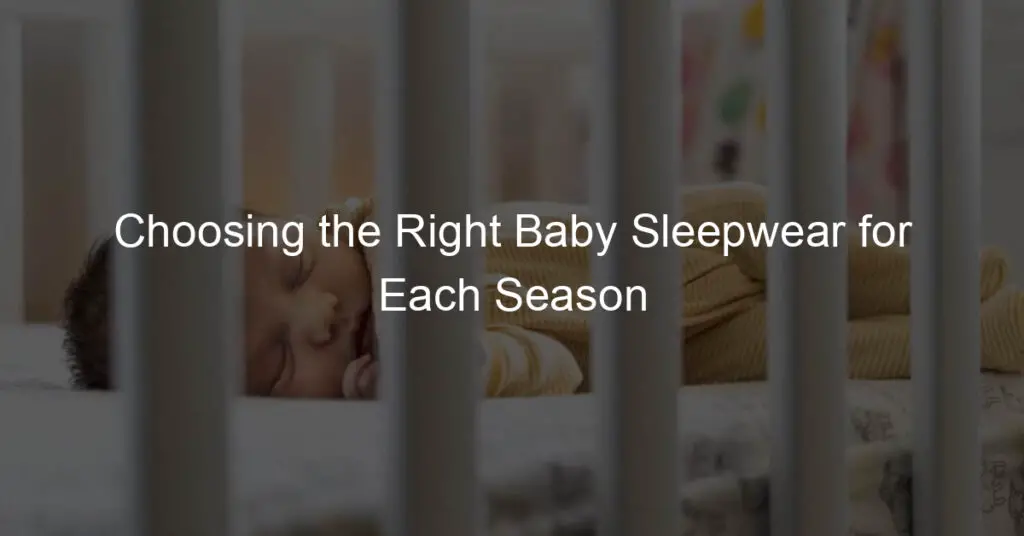As a new parent, one of the most common questions I had was, “When is a baby too big for a bassinet?”
Knowing the right time to transition from a bassinet to a crib is essential for ensuring the safety and comfort of your baby.
In this article, we’ll explore the factors that determine when your baby has outgrown their bassinet and needs to move to a more spacious sleeping environment.
Bassinets are designed for newborns and small infants, providing a cozy and secure space for them to sleep during their first few months. However, babies grow quickly, and it’s important to recognize the signs that your little one is ready to make the switch to a crib.
This can be determined by considering factors such as weight, length, and developmental milestones like rolling over or pushing up.
Key Takeaways
- Bassinets are suitable for newborns and small infants, but babies will eventually outgrow them.
- Pay attention to signs like exceeding weight limits, increased length, and developmental milestones to determine when your baby is too big for a bassinet.
- Transitioning from a bassinet to a crib ensures your baby’s safety and comfort as they continue to grow.
When Is A Baby Too Big For A Bassinet
As a new parent, it’s essential to stay informed about the key aspects of baby care, including where your baby should sleep. One popular option for newborn sleep is a bassinet, which offers considerable benefits but may come with some challenges.
In this section, we’ll delve into the critical components of bassinets, such as size and weight limits, safety standards, and when it might be time to begin considering a transition to a crib.
Size and Weight Limits
When it comes to finding the perfect bassinet for my baby, I know that size and weight limits play a crucial role. In general, bassinets tend to have a weight limit that ranges from 15 to 20 pounds.
Some newborns may already weigh close to the lower limit, while others will take a few months to reach that stage. Most importantly, I need to be aware of my baby’s development, as it will dictate when it’s time to switch to a more spacious sleeping solution.
Bassinet Safety Standards
The safety of my baby is always my top priority, which is why I make sure to choose a bassinet that adheres to the American Academy of Pediatrics safety standards.
This ensures that the bassinet is designed to minimize any potential risks, such as suffocation hazards, and guarantees a safe sleeping environment for my little one.
Benefits of Bassinets
I’ve found that bassinets offer several advantages for both me and my baby. For starters, their compact size allows me to easily position the bassinet in my bedroom, providing a convenient and less stressful space for nighttime feedings and soothing my fussy newborn.
Additionally, the portability of bassinets makes it easy for me to move the sleeping area throughout the house, ensuring that my baby can always be close by.
Potential Challenges
Despite their numerous benefits, bassinets can also present some challenges. For example, some newborns may quickly outgrow their bassinet or simply seem to be more comfortable in a different sleeping environment.
It’s important for me to stay adaptable and be ready to accommodate my baby’s needs and preferences, even if that means considering alternative sleep options like a crib.
When to Start Considering a Transition
As my baby grows, I must stay vigilant for developmental milestones that signal it’s time to transition from a bassinet to a crib. Such milestones can include an increase in mobility, such as rolling, pushing up, or sitting unassisted.
When I observe these movement milestones in my baby’s behavior, I know it’s essential to make the switch for their safety.
Understanding the basics of bassinets arms me with the knowledge I need to provide my baby with a safe and comfortable sleeping environment.
By paying attention to size, weight limits, safety standards, and developmental milestones, I can better cater to my baby’s needs and ensure their well-being.
Recognizing When Your Baby Is Too Big for a Bassinet
As a parent, it’s essential to know when your baby has outgrown their bassinet.
I’ll be sharing some physical and behavioral indicators to help you determine when it’s time for your little one to transition to a crib.
Physical Indicators
The main factors to watch for are your baby’s size and weight. Most bassinets have a weight limit between 20 lbs and 25 lbs. However, it’s essential to check your specific bassinet model to ensure you’re aware of its weight limit.
In addition to weight, the length of your baby is a crucial indicator. If your baby has grown between 24-27 inches, it’s a sign they may no longer fit comfortably in their bassinet.
Remember, each bassinet is different, so always refer to the manufacturer’s guidelines to determine the appropriate size and weight limits.
Behavioral Indicators
Beyond physical growth, your baby’s increased activity and behavior can also signal if they are too big for the bassinet. For instance, if your baby is:
- Rolling over
- Pushing up on their hands
- Showing signs of increased mobility
These milestones might mean that the bassinet’s shallow depth is no longer safe for your baby. Increased fussiness at bedtime can also suggest your baby’s discomfort due to being cramped in their bassinet.
Keep an eye on these physical and behavioral indicators to ensure your baby’s sleeping environment is conducive to their growth, development, and safety.
Remember, every baby is different, and while some babies might outgrow their bassinet between four and six months, others may need to transition sooner or later.
Safe Transition from Bassinet to Crib
Ideal Time for Transition
As a parent myself, I always wondered when the right time would come for my baby to move from their bassinet to a crib. Most babies generally make this transition between four and six months old.
Nevertheless, it’s important to remember that every baby is unique, so the ideal time to transition depends on their size, weight, and developmental stage. If you’re unsure about whether it’s time to move your baby, consider talking to your pediatrician or a sleep expert for guidance.
Creating a Safe Sleep Space
When moving my baby to a crib, I made sure to create the safest possible sleep environment to minimize the risk of Sudden Infant Death Syndrome (SIDS) or other sleep-related accidents.
Here are a few things that I recommend for creating a safe sleep space:
- Firm surface: Ensure the mattress is firm and covered with a tight-fitting sheet.
- No soft bedding or toys: Avoid placing any stuffed animals, pillows, bumper pads, or soft toys in the crib.
- Secure surroundings: Make sure there are no hanging cords, curtain ropes, or baby monitor wires within your baby’s reach.
Precautions to Avoid Suffocation and SIDS
Transitioning from a bassinet to a crib can bring new challenges for your baby’s safety, but taking these precautions will help keep your baby safe:
- Keep the room cool: Maintain the room temperature between 68 to 72 degrees Fahrenheit, as overheating could increase the risk of SIDS.
- Remove any loose blankets: Opt for a sleep sack instead of loose blankets, as it’s a safer alternative to keep your baby warm and reduce the risk of entanglement or suffocation.
- Place your baby on their back to sleep: This position is considered the safest for reducing the risk of SIDS.
By following these steps, you’ll help ensure a smooth and safe transition for your baby from their bassinet to a crib. Your little one will be well on their way to enjoying a secure, comfortable, and restful sleep. Good luck!
Co-Sleeping and Other Alternatives
Benefits and Risks of Co-Sleeping
Co-sleeping can offer some benefits for both parents and the baby. For example, it makes breastfeeding easier, as there is much less back-and-forth between rooms.
Co-sleeping can also help with soothing, as the baby is in bed with you or right next to your bed in a co-sleeper. However, it’s essential to be aware of the potential risks associated with co-sleeping.
For instance, there can be safety hazards if proper precautions are not taken or if unsuitable products, like Dock-A-Tot, are used as co-sleeping tools.
Why Some Parents Choose Swings or Co-Sleepers
Some parents opt for swings or co-sleepers as an alternative to a traditional bassinet. One reason is the KoolerThings Baby Bassinet, which offers a cotton bassinet and sturdy aluminum frame for durability.
It provides a highly breathable environment, keeping the baby cool and comfortable while they sleep. Further, co-sleepers can be an excellent room-sharing alternative for those who want to keep their baby close but still have a separate sleeping space.
Understanding Mini Cribs
Mini cribs are another option for parents who are either looking for a smaller alternative to a full-sized crib or need a temporary solution while transitioning their baby from a bassinet.
Like bassinets, mini cribs can be moved around the house with ease, making them a convenient choice for parents who need flexibility in their baby’s sleeping arrangements.
Mini cribs are often used in smaller living spaces or by parents who prefer a minimalist approach to their baby’s nursery.
In conclusion, it’s essential to consider your baby’s needs and safety when deciding on a suitable sleep solution. It’s crucial to transition your baby from a bassinet to a larger sleeping space, like a crib or a mini crib, when they start showing signs of outgrowing their bassinet, such as increased movement or the ability to roll over.
Remember to always follow safety guidelines and choose a sleep option that works best for you and your baby.
How to Make an Informed Decision
As a parent, I understand the importance of making an informed decision when it comes to choosing the right sleeping arrangement for my baby. So, I did my research to identify milestones and factors that can help us determine when our baby is too big for their bassinet.
Here are a few key points that I came across during my research.
Firstly, it’s essential to keep in mind that bassinets are designed for infants up to around 4-6 months old, or until they start rolling over, pushing up on their hands and knees, or sitting up.
It’s important to pay attention to these milestones and physical changes, as they could signal that it’s time for a transition to a safer sleeping space.
Another important factor to consider is our baby’s weight and length. Most bassinets have a weight limit of around 10-20 lbs, and babies who have grown to about 24-27 inches in length may not fit comfortably anymore.
It’s a good idea to frequently check the bassinet’s guidelines and measure our baby to ensure their safety and comfort.
Lastly, as a friendly reminder, I encourage all new parents to trust their instincts. If you feel that your baby is no longer safe or comfortable in their bassinet, it might be time to make the necessary transition.
After all, we know our babies best.
Frequently Asked Questions
What are the weight and size limits for bassinets?
Bassinets typically have weight limits ranging from 15 to 20 pounds. The size limits usually accommodate infants up to 24-27 inches in length. It’s essential to check the manufacturer’s recommendations for specific weight and size limits for your bassinet.
When should I transition my baby from a bassinet to a crib?
It’s generally recommended to transition your baby from a bassinet to a crib when they are around 4-6 months old or when they start rolling over, pushing up on their hands and knees, or sitting up.
Each baby is unique, so it’s important to watch for these developmental milestones and adjust accordingly.
What signs indicate my baby has outgrown their bassinet?
There are several signs that your baby may have outgrown their bassinet. These include:
- Having grown too long, I no longer fit comfortably in the bassinet.
- Increased mobility, such as rolling over, pushing up, or crawling.
- Sleeping in uncomfortable postures, usually due to limited space.
In these cases, it’s time to consider transitioning your baby to a crib.
How long is it safe for babies to sleep in bassinets?
Babies can safely sleep in bassinets up to around 4-6 months old or until they start rolling over, pushing up, or sitting up. These milestones indicate that your baby may need more space to move safely while they sleep.
What’s the best way to transition a baby from a bassinet to a crib?
To ensure a smooth transition, try the following tips:
- Gradually introduce your baby to their crib by allowing them to play and nap in it during the day.
- Maintain a consistent sleep routine and bedtime environment.
- Consider using a crib insert or sleep sack to help your baby feel secure during the transition.
Remember to be patient, as it may take some time for your baby to adjust to their new sleeping environment.
Are there risks if my baby stays in the bassinet too long?
Yes, there are risks associated with keeping your baby in a bassinet for too long. If your baby has outgrown their bassinet, they may be at risk for:
- Accidents caused by increased mobility within the confined space.
- Uncomfortable sleeping postures leading to poor sleep quality.
- Overheating, as a result of limited air circulation in a crowded bassinet.
It’s essential to prioritize your baby’s safety and comfort by recognizing when it’s time to transition to a crib.














